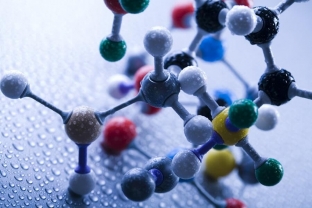Growth factors have become one of the most popular ingredients in cosmetics and injectables in recent years. The phrase that a face cream, or an eyelash gel, or a skin rejuvenation preparation contains growth factors instantly increases the interest of patients in it, although cosmetologists themselves often cannot clearly explain what, in fact, these factors build up. and why it is good for the patient. Read on estet-portal.com what growth factors in cosmetics can or cannot do and how to handle them properly.
What growth factors do in the skin and how they work
By and large, every cell in our body produces some kind of growth factors. Their job is to regulate cell differentiation from non-specialized to specialized, its growth and reproduction. Thanks to growth factors, a healthy state and the functioning of all organs and tissues are maintained. From the point of view of biologists, the discovery of growth factors has significantly changed the views of scientists on the processes that take place in cells.
Each of the growth factors, for example, contained in skin cells, is capable of triggering a cascade of biochemical reactions that are responsible for regeneration, for the synthesis of collagen and elastin fibers, for restoring skin density and elasticity.
Growth factors are able to interact with each other, and the increase in the activity of one of them in a chain stimulates the activity of the other.
However, none of the growth factors can independently create the effect of skin rejuvenation, it can only activate the biochemical reactions taking place in it. But in order for these reactions to actually occur, skin cells must have a certain reserve, which is created through the use of moisturizing, nourishing skin care products.
All growth factors are of low molecular weight and are able to easily penetrate the skin.
Features of the work of some growth factors in skin rejuvenation
There has been a lot of recent research into how growth factors work. These studies have confirmed that cosmetics with one or more growth factors in a certain concentration can reduce, slow down and even partially reverse some of the skin aging processes. With the help of growth factors, you can:
- reduce skin collagen loss;
- slow down the thinning of the dermis;
- reduce damage to elastin fibers.
Growth factors in cosmetics are able to restore small damaged blood vessels, reduce skin dryness, narrow pores, even out complexion.

The following growth factors are considered the most popular for use in cosmetology:
- transformative – enhances the synthesis of new collagen,
- vascular, hepatocytic – stimulate the growth of new blood vessels in the skin,
- keratinocyte – accelerates the division of epidermal cells,
- insulin-like, platelet – regulate cell growth and division.
The epidermal growth factor, which stimulates the growth and division of cells and the renewal of the epidermis, is of particular interest. It is even called the "beauty factor" because products containing it gradually increase the synthesis of collagen, elastin, hyaluronic acid and can quickly improve the appearance of aging skin.
Is it safe to use cosmetics with growth factors?
The question of the safety of cosmetics with growth factors is most relevant when using it, because these factors are produced in large quantities, say, not only in wound healing, but also in tumors and autoimmune diseases. Some researchers believe that the constant use of cosmetics can provoke health problems. So, for example, fibroblast growth factor, used in products for stimulating eyelash growth, is considered the cause of the development of eye inflammation. The use of transforming growth factor is associated with the appearance of rough scars, including keloids.
The opinion of experts regarding the use of cosmetics with growth factors is as follows:
- use such funds should be short courses (4-6 weeks) and take a break of several months;
- do not use products with growth factors daily;
Absolutely avoid them if there is an increased risk of cancer.







Add a comment